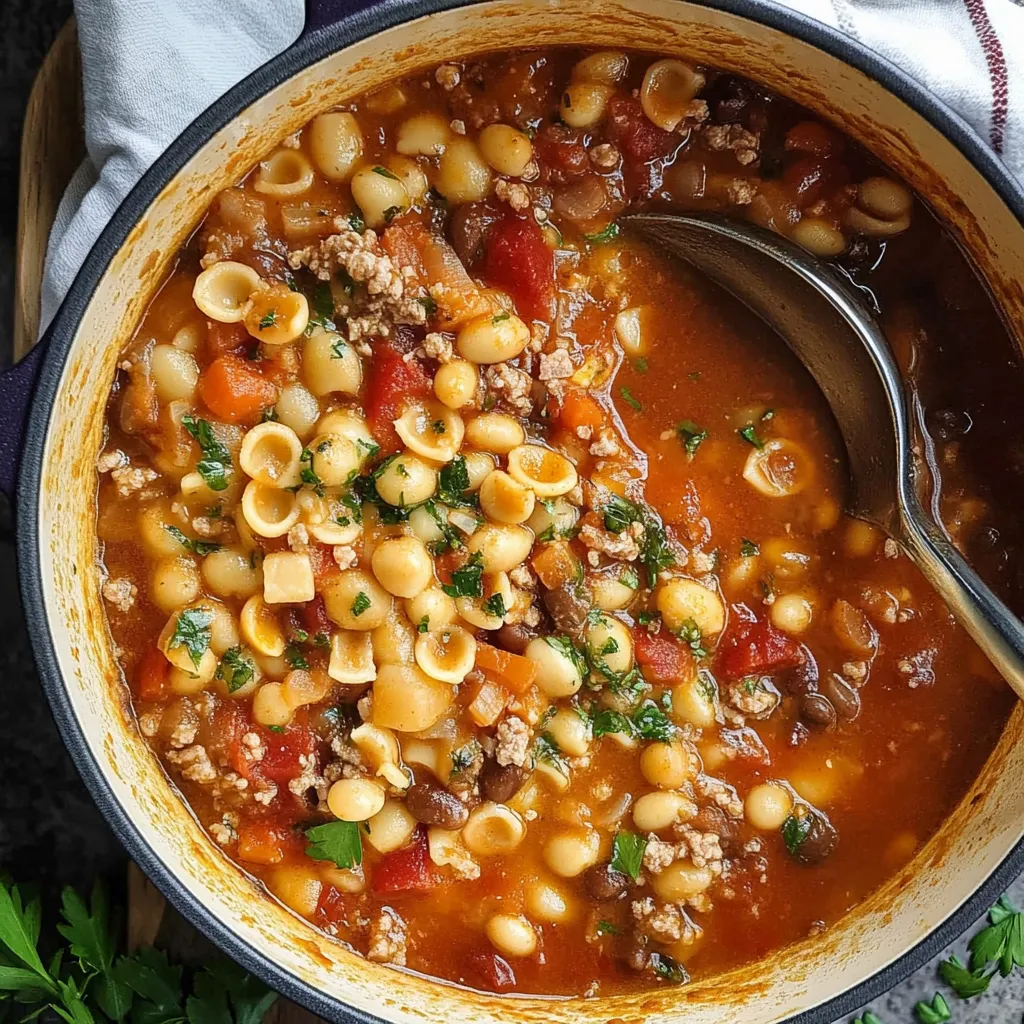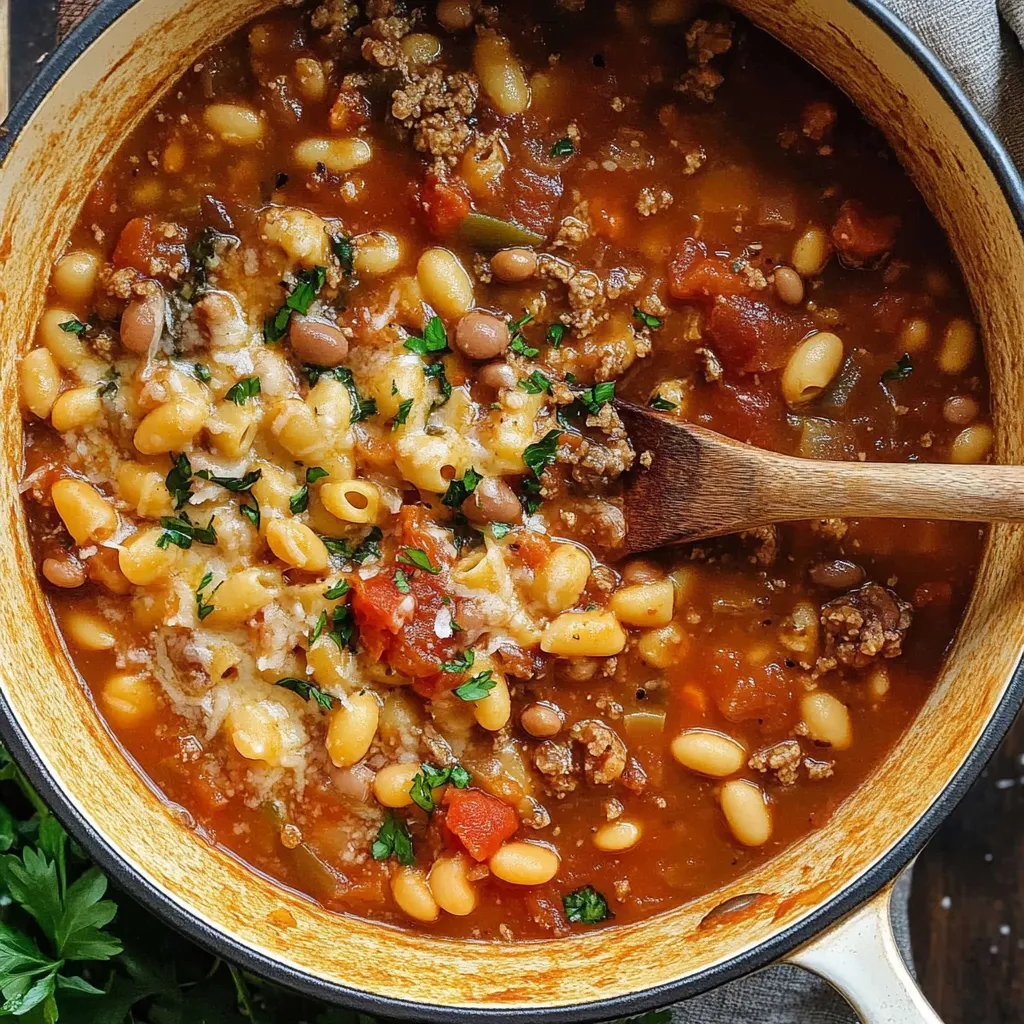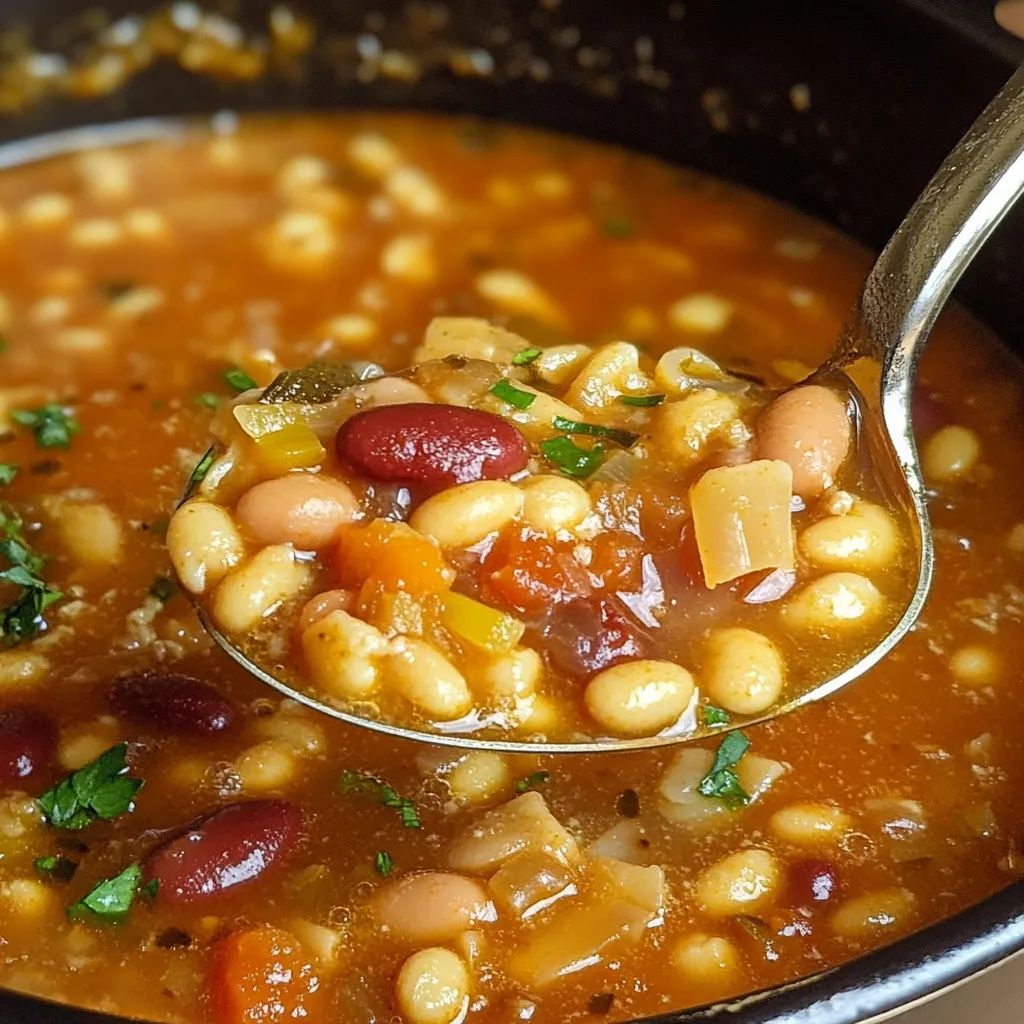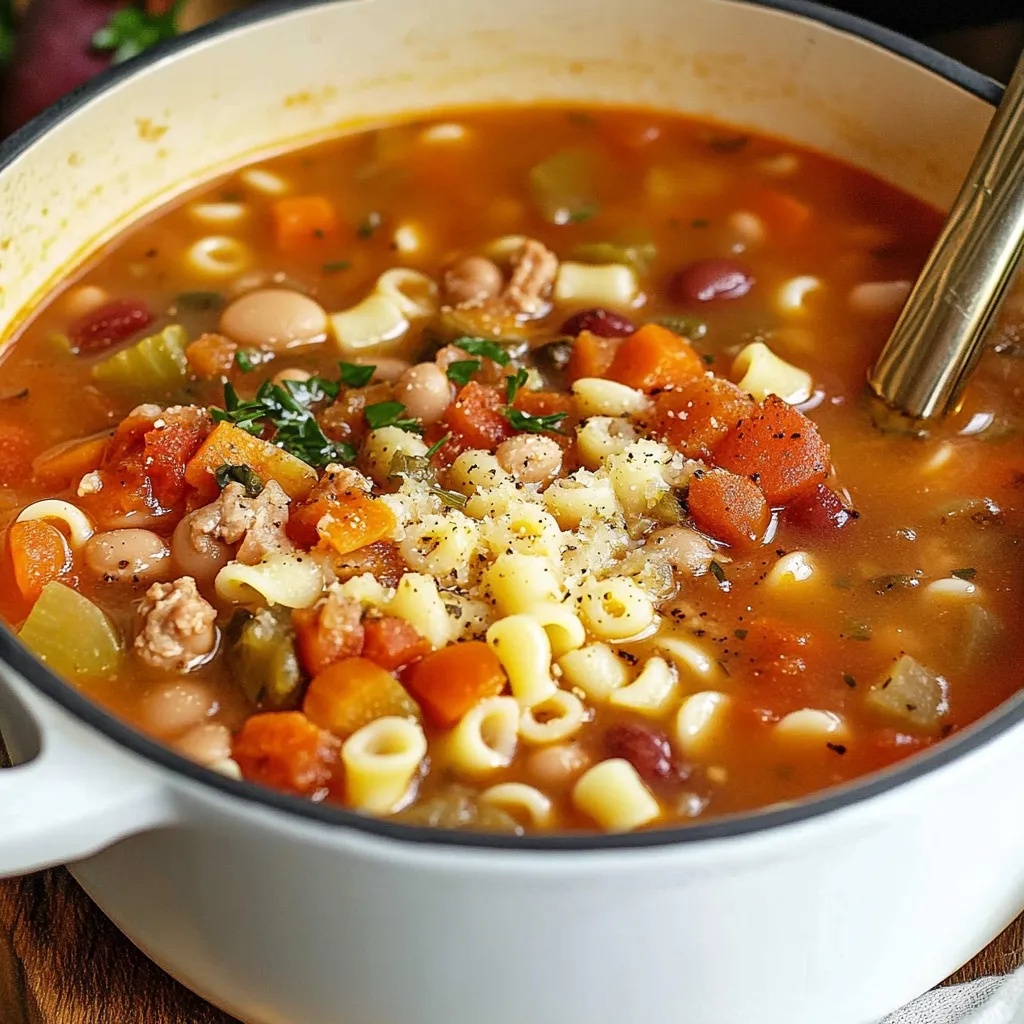 Pin it
Pin it
Transform a humble combination of pasta and beans into a hearty Italian soup that's both comforting and nourishing. This traditional pasta e fagioli balances tender beans, perfectly cooked pasta, and aromatic vegetables in a flavorful broth.
Essential Ingredients:
- Cannellini beans - provide creamy texture
- Ditalini pasta - traditional small shape catches broth
- Fresh vegetables - create flavor foundation
- Quality broth - forms rich base
- Fresh herbs - brighten finished dish
Detailed Instructions:
- Perfect the Soffritto
- Dice vegetables uniformly for even cooking
- Cook until onions are translucent
- Allow vegetables to caramelize slightly
- Develop deep flavor base
- Build Layers of Flavor
- Toast herbs briefly to release oils
- Add tomatoes and scrape bottom of pot
- Let beans simmer to absorb flavors
- Adjust seasoning gradually
- Master the Pasta
- Cook until just before al dente
- Stir occasionally to prevent sticking
- Watch liquid levels carefully
- Allow pasta to finish in broth
 Pin it
Pin it
Growing up in an Italian household, pasta e fagioli was our go-to comfort food. The key was allowing vegetables to develop deep flavor before adding liquid.
Temperature Control:
Keep heat moderate to prevent rapid evaporation and allow flavors to meld properly. Too high heat makes beans break down.
Consistency Balance:
The perfect pasta e fagioli should be thicker than soup but thinner than stew. Adjust liquid gradually to achieve ideal texture.
 Pin it
Pin it
This recipe captures authentic Italian flavor while remaining approachable for home cooks.
Mastering Bean Selection
The key to exceptional pasta e fagioli lies in properly cooked beans. While canned beans offer convenience, dried beans provide superior texture and flavor absorption. Soak overnight and cook separately for best results.
Broth Development
- Start with pancetta or bacon for smoky base
- Add Parmesan rind during simmering
- Use combination of chicken and vegetable broths
- Finish with fresh herbs
Regional Variations
- Northern versions often include rosemary
- Southern preparations may include anchovies
- Venetian style uses broken spaghetti
- Roman version includes more tomatoes
Temperature Management
Low, steady heat develops flavors while preventing beans from breaking down. If using dried beans, maintain gentle simmer throughout cooking.
 Pin it
Pin it
Serving Traditions
In traditional Italian homes, pasta e fagioli thickens overnight and is often served as both soup and pasta course. Drizzle with high-quality olive oil and fresh-cracked pepper just before serving.
Chef's Final Notes
- Never rush the soffritto development
- Add pasta just before serving
- Finish with best olive oil and cheese
This humble soup represents the heart of Italian cucina povera - simple ingredients transformed through technique into something extraordinary.
Frequently Asked Questions
- → Can I make this vegetarian?
- Yes! Skip the bacon and use vegetable broth instead of chicken broth. The soup will still be delicious and filling.
- → What's the best pasta to use?
- Ditalini is traditional, but any small pasta works well - try small shells, orzo, or even broken spaghetti pieces.
- → Why are my beans mushy?
- Add the beans toward the end of cooking just to heat through. This keeps them firm and prevents them from breaking down.
- → Can I freeze this soup?
- Yes, but freeze it without the pasta. Add freshly cooked pasta when reheating to prevent it from getting mushy.
- → Is this soup supposed to be thick?
- The consistency is up to you. Add more broth for a soupier version, or mash some beans for a thicker stew-like texture.
